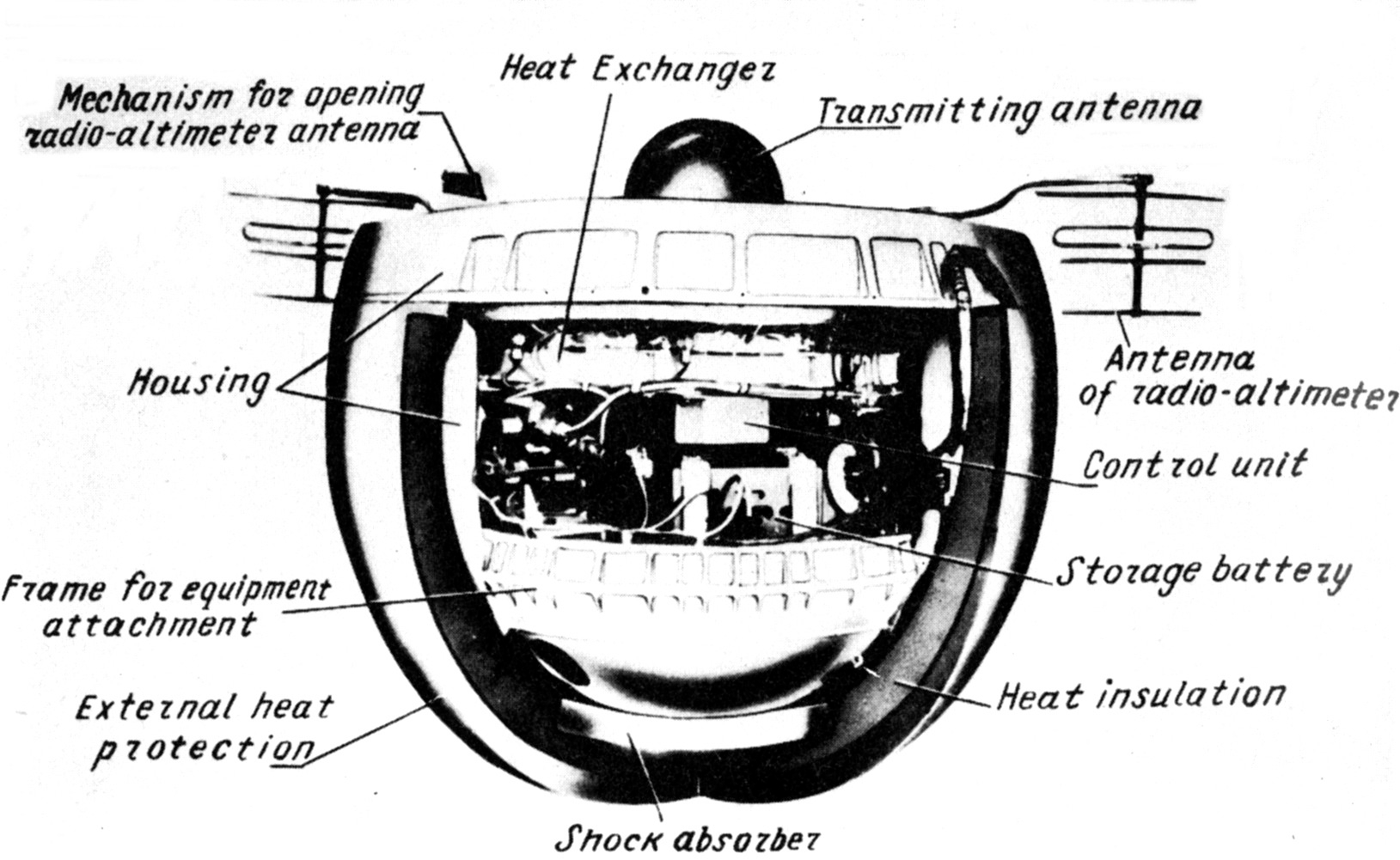
by Gideon Marcus
To the Stars
Venus has gotten a lot of attention from Earth's superpowers. Part of it is its tremendous similarity to our home in some ways: similar mass, similar composition, similar distance from the Sun (as such things go). But the biggest reason why so many probes have been dispatched to the Solar System's second world (to wit: Mariner 2, Mariner 5, Venera 1, Veneras 2 and 3, and Venera 4) is because it's the closest planet to Earth. Every 19 months, Earth and Venus are aligned such that a minimum of rocket is required to send a maximum of scientific payload toward the Planet of Love. Since 1961, every opportunity has seen missions launched from at least one side of the Pole.
This year's was no exception: on January 5 and 10, the USSR launched Venera (Venus) 5 and 6 toward the second planet, and this month (the 16th and the 18th), they arrived.

Our conception of Venus has changed radically since spaceships started probing the world. Just read our article on the planet, written back in 1959, before the world had been analyzed with radar and close-up instruments. Now we know that the planet's surface is the hottest place in the Solar System outside the Sun: perhaps 980 degrees Fahrenheit! The largely carbon dioxide and nitrogen atmosphere crushes the ground at up to 100 atmospheres of pressure. The planet rotates very slowly backward, but there is virtually no difference between temperatures on the day and night sides due to the thick atmosphere. There is no appreciable magnetic field (probably because the planet spins so slowly) so no equivalent to our Van Allen Belts or aurorae.
This is all information returned from outside the Venusian atmosphere. Inference. To get the full dope, one has to plunge through the air. Venera 4 did that, returning lower temperatures and air pressures. This was curious, but it makes sense if you don't believe the Soviet claim that the probe's instruments worked all the way to the ground—a dubious assertion given the incredibly hostile environment. No, Venera 4 probably stopped working long before it touched down.
The same may be true of Veneras 5 and 6. TASS has not released data yet, but while the two probes were successfully delivered onto Venus' surface, we have no way of knowing that they returned telemetry all the way down. Indeed, the Soviet reports are rather terse and highlight the delivery of medals and a portrait of Lenin to Venus, eschewing any mention of soft landing. The news does spend a lot of time talking about solar wind measurements on the way to Venus—useful information, to be sure, but beside the point.


The Venera spacecraft and lander capsule
Anyway, at the very least, we can probably hope to get some clarity on what goes on in the Venusian air. It may have to wait until next time before we learn just what's happening on the ground, however.
To Hell
I bitched last month about the lousy issue of The Magazine of Fantasy and Science Fiction. Well, I am happy to say that the May issue is more than redeemed by this June 1969 issue, which, if not stellar throughout, has sufficient high points to impress and delight.

by Gray Morrow
Continue reading [May 20, 1969] Ad Astra et Infernum (June 1969 Fantasy and Science Fiction)

![[May 20, 1969] Ad Astra et Infernum (June 1969 <i>Fantasy and Science Fiction</i>)](https://galacticjourney.org/wp-content/uploads/2024/05/690520coverfsf-652x372.jpg)